A Comprehensive Pathophysiology of Dandruff and Seborrheic Dermatitis – Towards a More Precise Definition of Scalp Health
January 2013
in “Acta dermato-venereologica”
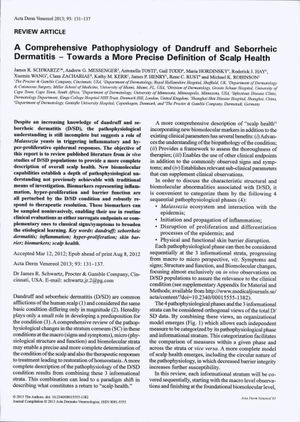
TLDR The document concludes that dandruff and seborrheic dermatitis are linked to inflammation and skin changes, and treating them with specific shampoos can reduce these issues.
The 2013 document reviews the pathophysiology of dandruff and seborrheic dermatitis (D/SD), emphasizing the role of Malassezia yeasts in triggering inflammatory and hyper-proliferative responses in the skin. It suggests using new biomolecular markers to improve understanding and treatment assessment of D/SD. The pathophysiological changes are categorized into four phases, and the review underlines the need for treatments to normalize skin structure and function. Additionally, a study within the document used non-invasive sampling and ELISA quantification to analyze inflammatory and structural biomarkers in large clinical sample sizes. It found significant differences in biomarker levels between D/SD and normal populations, indicating issues with differentiation and barrier integrity. Treatment with a 1% potentiated ZPT shampoo reduced these biomarkers and correlated with flake reduction, supporting the classification of D/SD as an inflammatory dermatosis and the use of biomarkers in treatment assessment. The document does not provide the number of participants, so the strength of the study cannot be determined.
View this study on medicaljournalssweden.se →
Cited in this study
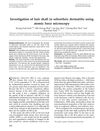
research Investigation of hair shaft in seborrheic dermatitis using atomic force microscopy
Hair from people with seborrheic dermatitis is thicker scaled, more damaged, and thinner than healthy hair, and atomic force microscopy can help monitor the condition.
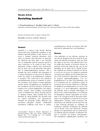
research Revisiting dandruff
Dandruff is mainly caused by a scalp reaction to yeast, can worsen hair loss, and antifungal treatments may help.
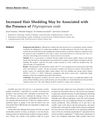
research Increased Hair Shedding May be Associated with the Presence of Pityrosporum ovale
Malassezia yeast might be linked to more hair shedding.
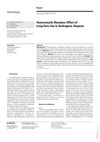
research Ketoconazole Shampoo: Effect of Long-Term Use in Androgenic Alopecia
Ketoconazole shampoo improves hair growth and reduces oil similarly to minoxidil in male pattern hair loss.